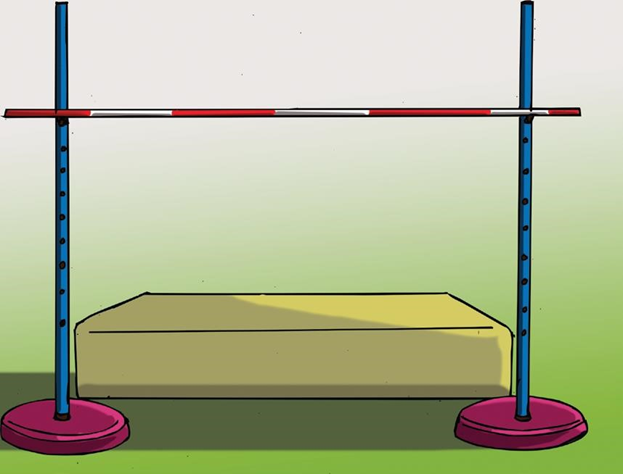Lesson Notes By Weeks and Term - Primary 5
HIGH JUMP
WEEK 6
SUBJECT: PHYSICAL AND HEALTH EDUCATION
TERM: 1ST TERM
CLASS: PRIMARY 5
TOPIC: HIGH JUMP
BEHAVIORAL OBJECTIVES; At the end of the lesson, pupils should be able to:
Different kind of Charts and references materials�
Scheme of work�
And other relevant materials
6 years basic Education curriculum
Online information�
BUILDING BACKGROUND/CONNECTION PRIOR TO KNOWLEDGE:
Pupils are familiar with the topic in their previous classes.
HIGH JUMP
High jump is a field event that involves jumping for height over a raised object into a specified area (landing foam). It is done with a single take-off (one leg only).
The equipment needed for high jump are:
�
There are five skills, which are the following:
�
The approach run
This is the running toward the approach take-off. The run must be long enough (between 10 and 15 strides). The jumper could approach from a straight line or from either the left or right angle. The angle of approach is determined by the style the jumper intends to use.
The approach run is slower than that of long jump because speed is of less importance.�
The take-off
Take-off has one goal: jumping high. This is the point where the jumper leaps from the ground in preparation for clearing the bar. The take-off foot strikes the ground with a bend at the knee, and the body leans back and springs forward for a flight. The jumper takes off on one leg.
The flight (Clearance of the crossbar)
At this stage, the jumper must achieve a high lift before changing into any clearance technique that could be adopted in clearing the bar. A jumper should use the style that requires the least effort in attempting to clear the bar.�
The landing
Landing in high jump does not require any special tactics. A jumper can land on the back, legs or on the side with the shoulder, whichever is comfortable. Jumpers should not land on their head or neck. Where there is no landing foam, there must be enough sawdust for the absorption of landing shock.�
The recovery
The recovery stage in high jump is a stage of resting after landing. After landing, the jumper walks out of the landing area. If he stays and the crossbar falls, it shall be regarded as dislodging the bar. He should also not walk under the crossbar to the other side.
�
Assessment and evaluation
Teacher asks questions from pupils based on the topic�
Wrap up and conclusions
Teacher goes over the topic for better understanding
� Lesson Notes All Rights Reserved 2023